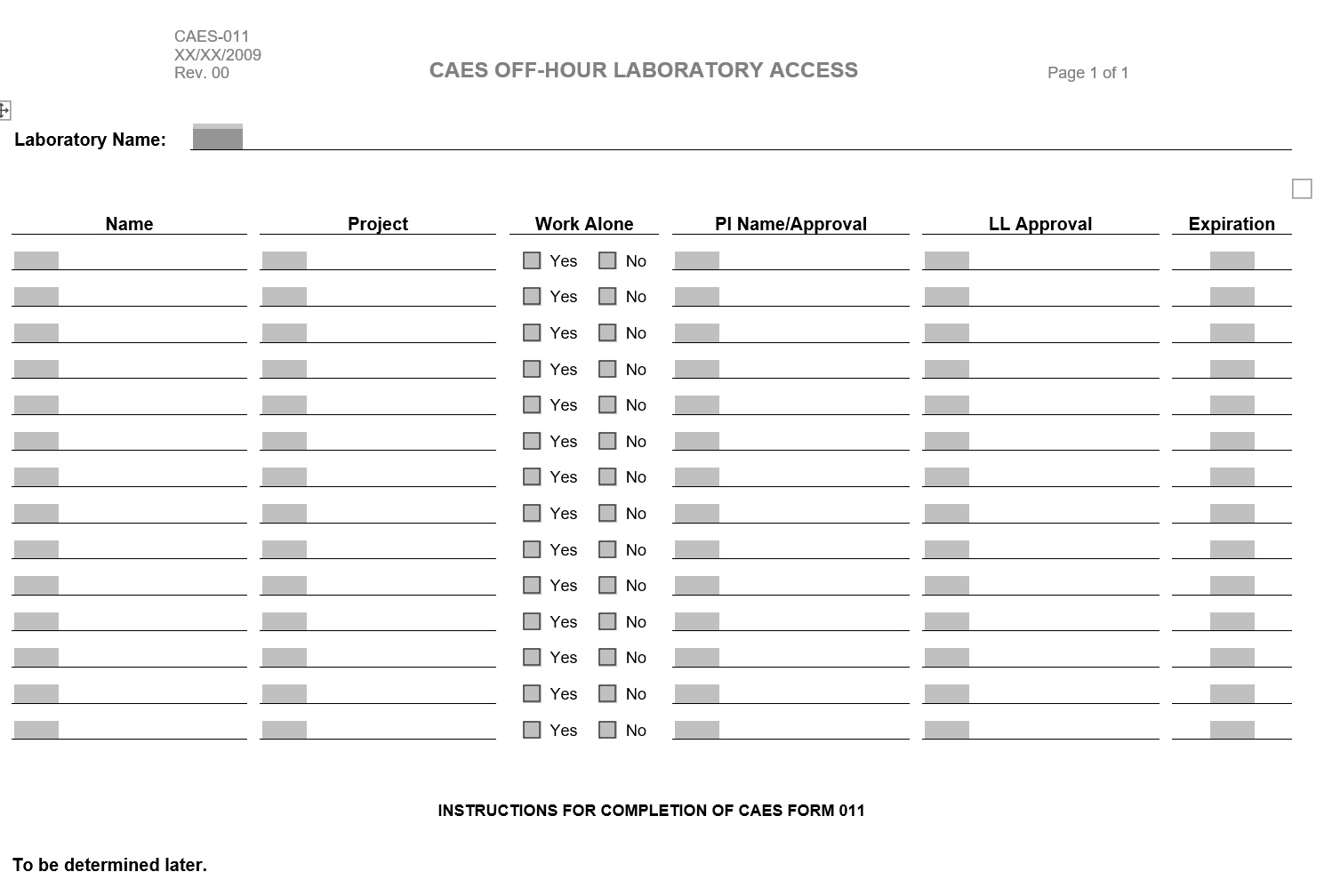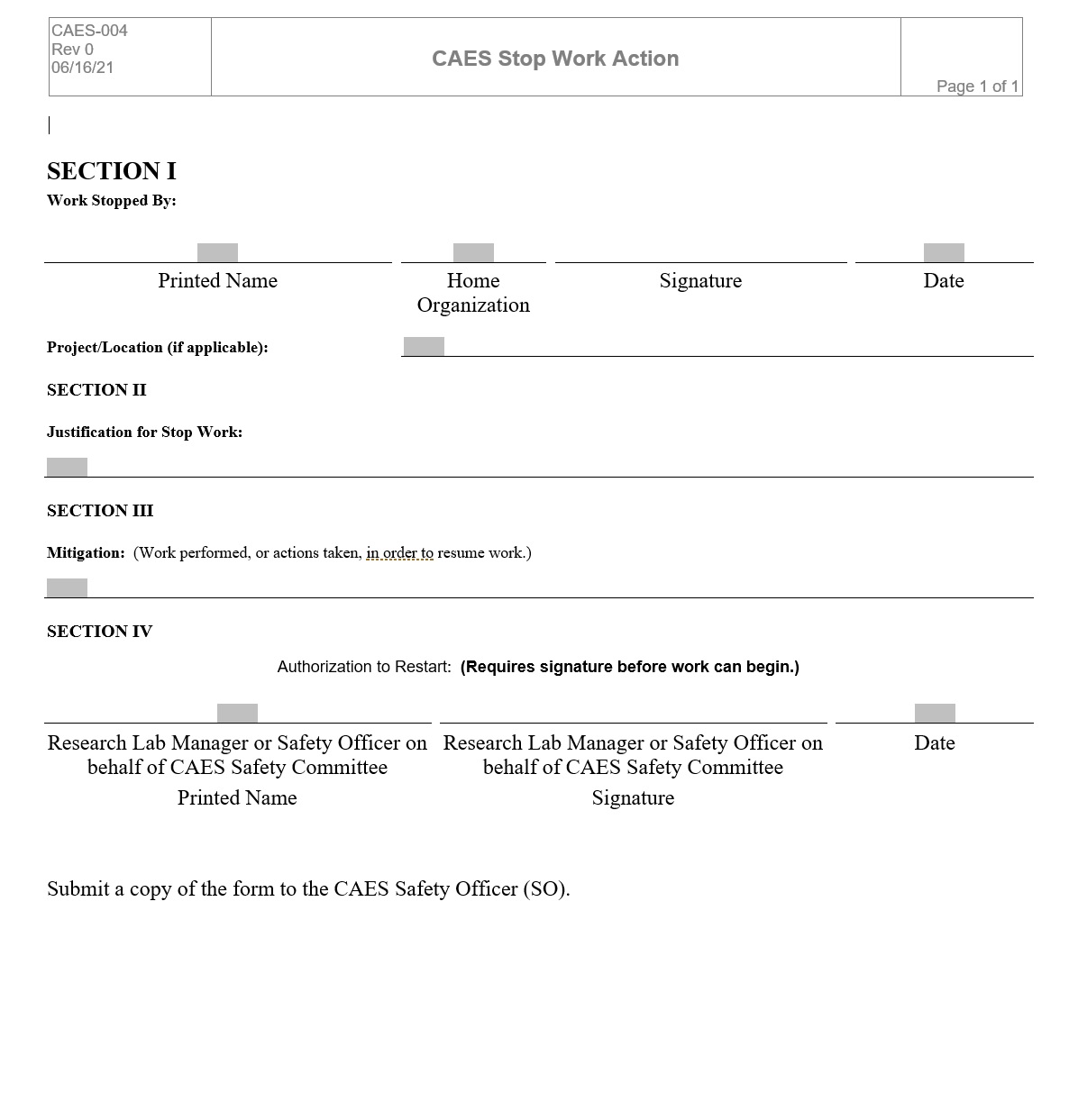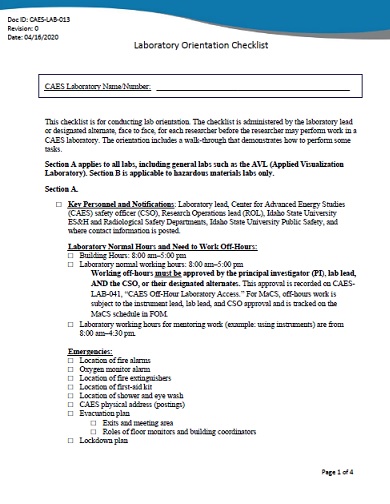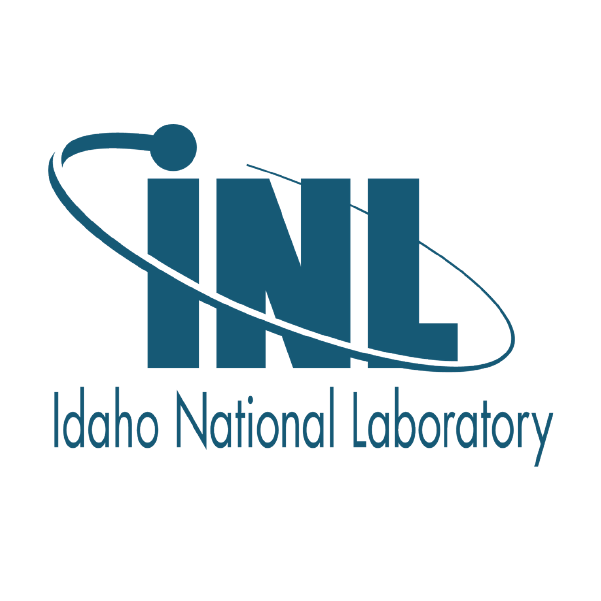Research & laboratories
PLUG into CAES
Students
Faculty
INL Researchers
Industry
Public
Capabilities
The third critical outcome of the Research pillar is the concept of a connected research environment in which researchers have seamless access — virtual and physical — to CAES facilities and laboratories in Idaho Falls and at the universities. This outcome relies on early initiatives — streamlining key features such as access and training across facilities, for example — and the development of a virtual CAES-connected campus. A connected research environment brings significant benefits to researchers, including a much broader array of leveraged capabilities that can be more readily accessed, scheduled and coordinated toward major proposals and highly sought technological advances. Research at CAES and at CAES' affiliated centers is centered on the seven focus areas outlined in the CAES Strategy: Nuclear Energy; Energy-Water Nexus; Cybersecurity; Advanced Manufacturing; Innovative Energy Systems; Energy Policy; and Computing, Data, and Visualization.
List
CAES
Labs
CAES Labs
The CAES research facility houses eight laboratories, each providing a state-of-the-art environment where researchers have seamless access — virtual and physical.
Search
Equipment
Equipment
The combined equipment infrastructure of the CAES consortium provides access to high-tech, state-of-the-art tools for research, academia, and regional companies.
Research Highlights
Everything You Need to Know to Conduct Research at CAES
Click on each item to read more

1. Home Institution Awareness
Before the Principal Investigator (PI) begins a detailed work planning process, CAES performs an initial screening to determine if it can support the project and provides feedback to the PI on the type of planning required. This screening assesses the project's alignment with CAES mission, the availability and capacity of CAES facilities, whether or not the project's hazards can be managed within the ISU-CAES operating envelope, and the level of rigor needed to plan and execute the proposed project work scope. To expedite screening and minimize impact on the project, the PI should contact Kristi Moser-McIntire at 208-533-8133 who will assign a CAES point-of-contact (POC). If the PI has already established contact with the Laboratory Lead for the laboratory in which the project is planned, ask Kristi to determine if the lab lead is the appropriate POC. To request CAES Lab access, the PI downloads the Initial Screening of CAES Potential Project form, completes it with support from the POC, and submits it as an email attachment to Kristi Moser-McIntire.
2. Propose Research or Equipment Installation
Propose Research
Before the Principal Investigator (PI) begins a detailed work planning process, CAES performs an initial screening to determine if it can support the project and provides feedback to the PI on the type of planning required. This screening assesses the project's alignment with CAES mission, the availability and capacity of CAES facilities, whether or not the project's hazards can be managed within the ISU-CAES operating envelope, and the level of rigor needed to plan and execute the proposed project work scope. To expedite screening and minimize impact on the project, the PI should contact Kristi Moser-McIntire at 208-533-8133 who will assign a CAES point-of-contact (POC).
If the PI has already established contact with the Laboratory Lead for the laboratory in which the project is planned, ask Kristi to determine if the lab lead is the appropriate POC. To request CAES Lab access, the PI downloads the Initial Screening of CAES Potential Project form, completes it with support from the POC, and submits it as an email attachment to Kristi Moser-McIntire.
Projects with Radiological Materials
As part of the initial project screening, the Principal Investigator works with a CAES point-of-contact (POC) and the ISU Radiation Safety Officer (RSO) to characterize the project scope and requirements. Based on these discussions, the RSO makes a preliminary determination of whether the work can be performed in CAES. If the RSO initially decides the work cannot be performed in CAES, the principal investigator, CAES leadership, and RSO may choose to explore alternatives ways for the work to be performed in CAES. Alternatives could include changing the scope, types of materials, and quantities or requesting a change to ISU's NRC License. An affirmative decision by the RSO is factored into the decision made by the CAES leadership team that makes the final decision on all work performed in CAES.
The types of items discussed, specific to radiological work, are shown below:
- Identify radionuclide(s), activities (quantity) and chemical/physical form (i.e., powder, liquid, solid, sealed, unsealed, etc.) Describe work and types of hazards (i.e., pressure, temperature, heating, grinding, cutting, etc.)
- Identify equipment (existing equipment they want to use and new equipment they want to bring into CAES that will be used in the project)
- Identify containment required for rad work to be performed in (i.e. hood, glovebox, open bench, etc.)
- Identify if air monitoring will be required based on rad work performed (i.e. air sampling, continuous air monitoring, etc.)
- Working with the CAES POC and RSO assess whether the work can be performed within the operating envelope for the ISU NRC license
- Identify if there is any intent to mix radionuclides with hazardous materials thus creating mixed hazardous waste. Working with the CAES POC, obtain preliminary approval from the RSO for the work to be performed in CAES, under the ISU license.
During the proposed project stage a preliminary decision should be made regarding the project's responsible user which is a functional requirement for each project that uses radiological materials.
Propose Equipment Installation
If a person wants to install equipment in a Laboratory, whether or not it is tied to a specific project, they initiate the process using the guidelines below: Before applying to bring equipment into the CAES Research Facility:
- If the equipment is tied to a project, complete the project initial screening process.
- Include the laboratory lead and your home organization associate director in planning for equipment purchases and installation. Click here to view CAES Points of Contact.
- Meet home organization requirements for equipment purchases and installation including budgeting, billing, sole sourcing, etc.
- Fill out the Request to Install Equipment in CAES form. Email the completed form to Kristi Moser-McIntire. Kristi will forward your form to the CAES management team for approval.
- Prepare to recommend who you wish to perform the equipment installation or associated facility modifications. Keep in mind that contractors and service providers must be qualified to work in State of Idaho facilities and must arrange for and complete required State inspections. Depending on the complexity of the installations or modifications, you may be required to submit such supporting documentation as engineering drawings. As an agency of the State of Idaho, ISU is the final authority on contractors, service providers, and installations or modifications.
- Once the CAES management team has approved, obtain permission from ISU to proceed. Complete the CAES work order form for alterations and modifications.
- Upon completion of the work, provide "as built" documentation to ISU. Email this documentation to Kristi Moser-McIntire.
3. CAES Initial Approval
After the CAES project point-of-contact has confirmed the Initial Screening of CAES Potential Project form is complete, CAES will make every effort to process the form in a timely manner. This review is performed by the CAES leadership team, the cognizant laboratory lead, and the ISU-CAES Safety Officer with input provided, as needed, by subject matter experts.
4. Create a Project Plan
Working closely with a CAES point-of-contact (POC), PIs decide on the level of project planning documentation that is appropriate for their project. Also, the POC will familiarize the PI with the core set of hazards and mitigations that are in place for each lab, which are already accounted for and only need to be referenced in the project planning documentation. Project planning is based on a graded approach. In all instances the work planning process will systematically address the required elements of the CAES standard for work control:
- Activity/Task descriptions
- Risk and controls
- Waste generation
- Training
- Emergency Procedures
- Exit Strategy
In the case of routine low-risk work that is researcher controlled, the PI is required to simply document confirmation that the performer has the skills, experience and/or training to perform the work safely using the Researcher Controlled Activity template. In other more complex cases that entail more risk, the PI is required to document work activity hazards, mitigations, and controls. A Project Plan shall be developed using the Project Plan template. Each project plan shall be approved by the principal investigator's home organization before it is submitted to CAES for review and approval. Research Involving Radiological Materials Project using radioactive materials will provide a description of the rad work to be performed in the lab using the form RPR 13 and should also include, when applicable:
- A list of the radionuclides to be used in the lab, activities (quantities), chemical/physical forms (sealed, unsealed, powder, liquid, solid…) and ALI's
- Brief description of experimental objectives and methods, with justification for the specific radionuclides and quantities
- Description of facilities where radiation sources will be used and stored, including rooms, fume hoods, shielding and security arrangements; include diagram of proposed layout
- Description of the equipment to be used for rad work
- Description of the proposed operating or handling procedures used for the safe use and exposure control of radioactive material
- Description of radiation survey instruments that will be readily available for contamination and exposure control, and description of analytical instruments that will be used
- Description and estimated quantities of radioactive wastes to be generated. Identify if any radioactive wastes will also contain any hazardous materials, as defined by the EPA. See the ISU Hazardous Waste Policies and Procedure Manual.
- Proficiency/Training requirements for researchers and how they can be met
- Demonstrate to the satisfaction of the RSO and the RSC that he or she has had sufficient training and experience in the safe use of radiation sources and knowledge of radiation instrumentation necessary to monitor those sources.
Note: To accelerate the timeline for commencement of research, during the Initial Approval (Phase 1) and Create a Project Plan processes, the RSO has the discretion to grant interim approval for a project. The written interim approval describes the scope of radiological work and activities that may be performed prior to final approval of the project plan and formal approval of the project by the ISU Radiation Safety Committee. Each project that uses radiological materials must have a designated responsible user. A Responsible User (RU) is an individual authorized by the ISU Radiation Safety Committee (RSC) to acquire and use specific radiation sources, and to supervise such use by others. An individual is designated to serve as a responsible user only after they provide the RSC with a detailed plan for the proposed use of radiation sources including secure storage, safe handling, control of exposures and appropriate waste disposal methods. The RU must update such information by means of periodic revisions or renewals of the authorization request as required by the Committee. In addition, the RU is required to demonstrate to the satisfaction of the RSO and the RSC that he/she has had sufficient training and experience in the safe use of radiation sources, and must acknowledge and accept in writing responsibility for:
- Instruction in radiation protection practices for all personnel working with radiation sources and/or within facilities for which he or she is responsible
- Acquisition of equipment, supplies and services necessary for the safe use of radiation sources
- Security against misuse or theft of radiation sources as is consistent with established policy promulgated by the RSC
- Maintaining accurate inventory records for all radionuclides, including acquisitions, uses, transfers, records concerning disposals and records necessary for any decay estimation required. Only the TSO staff, with written approval from the RSO, may dispose of radioactive materials.
- Performing regular bioassays, exposure and/or contamination surveys and records as appropriate to the nature of the radiation use and as specified by the RSO.
- Notification of the RSO of any accident, injury or abnormal incident related to radioactive materials or radiation producing machines.
Arranging for authorization of another individual (alternate responsible user) to assume the preceding responsibilities, or to suspend or terminate all radiation uses, prior to any extended absence. Responsible User applicants should complete the appropriate forms and plan and submit them to the RSO. The CAES POC for a project will explain the RU application process, as needed. For equipment operation, the level of documentation is determined by the type, complexity, hazards of operation, and nature of application. The Equipment Standard Operating Procedure template shall be used unless otherwise negotiated with your CAES point-of-contact. Submit project planning documentation packages to your CAES POC. Additional supporting information for INL researchers is available by clicking the following links:
- CAES Laboratory Research Frequently Asked Questions
- Analysis of Form 420.15 "Non-DOE ISMS Infrastructure Worksheet," requirements with respect to activities being performed at the Center for Advanced Energy Studies (CAES).
ISU-CAES Requirements
CAES training is implemented at four levels: facility, core laboratory, lab-specific, and project-specific. The current required training for the first three levels and unescorted laboratory access are implemented through the CAES Training and Access Management System (TAMS).
Home Institution Permissions
The PI is to plan work in accordance with his or her home organization process, while at the same time meeting all CAES requirements.
5. Project Approval
6. Collocated Hazards and Off Normal Conditions
Evaluate Collocated Hazards and Off Normal Condition
Definitions
Co-located hazards: Hazards associated with a project occurring in the same laboratory, but for a different project. Personnel need to be aware so these hazards do not pose a risk to them.
Note: Because many of the hazards associated with a project only present a risk to project researchers, the co-located hazards list may not be an exhaustive list of all hazards associated with a project.
Off Normal Condition: A condition that is not expected in the normal/steady state execution of a project. A condition that, if observed by a non-project personnel, requires the person to take a pre-specified set of actions.
Responsibilities for Project Co-located Hazards and Off Normal Conditions
- PI for a project documents co-located hazards and off normal conditions in the Laboratory Manual.
- PI, Laboratory Lead, and CAES Safety Officer decide how co-located hazards and off normal conditions are communicated to personnel who have unescorted access to the Laboratory. Note: At a minimum, co-located hazards are communicated via a read and sign using the CAES Training/Access Control system.
- Individual Contributor ensures they are familiar with all collocated hazards and off normal conditions in a Laboratory.
Process
After Project Plan approval, the PI generates a list of co-located hazards and off normal conditions and submits the list to the Laboratory Lead and CAES Safety Officer for approval and decision on how to communicate the information to Laboratory personnel with unescorted access rights. The list shall include:
- Name and description of hazard or off normal condition. The description should include enough information for a person to readily distinguish between an off-normal and normal condition. E.g., an accumulation of water on the floor versus an accumulation of water on the floor in excess of one gallon.
- Actions for non-project Laboratory to take 1) to avoid risk associated with each hazard and 2) in response to an off normal condition.
The approved list of co-located hazards and off normal conditions is communicated to Laboratory personnel as prescribed by the PI, Laboratory lead and CAES Safety Officer. Completion of actions required to communicate the information is documented in the CAES document management and training system.
7. Potential Scope Change
As research is performed, the PI is responsible for assessing if a change in scope warrants a change in the project's documentation including hazard identification and mitigation. Also, the PI should determine if lessons learned during project execution warrant a change in how the work is performed; and communicate them to others in CAES.
8. Conduct Routine Inspections
The PI and Laboratory Lead are responsible for conducting routine inspections (one inspection per Lab per month) to confirm the work environment and equipment continue to function as planned to support productive and safe work. Individual contributors are encouraged to lead or participate in these inspections which are conducted using the CAES Laboratory Safety Inspection Checklist. The inspections can be used as a teaching tool for students. The results of an inspection may be a rich source of lessons learned that should be communicated to others in CAES.
9. Safety Committee Oversight
The CAES safety committee will meet regularly and provide a forum for crosscutting safety-related issues. The committee's responsibilities include making decisions on changes to CAES ES&H and operations processes, sharing and distributing lessons learned, and providing a forum for CAES tenants to communicate ideas and concerns.
10. Project Documentation
A Laboratory Manual is maintained in each Laboratory. Electronic documentation is maintained on the CAES portal and is accessible via the CAES community. Configuration management of project documentation is the responsibility of the project PI.
Home Institution Permissions
Resources
CAES Laboratory Safety Inspection Checklist

CAES Off-Hour Laboratory Access form

Stop Work Action form

Stop Work Authority Procedure

Laboratory Orientation Checklist

RPR 13

Equipment Standard Operating Procedure

CAES Lab Research FAQs

ISU Haz Waste Policies and Procedure Manual

Form 420.15 Non-DOE ISMS Infrastructure Worksheet

Researcher Controlled Activity Template

MaCS Service Request Form

Get Expert Help
Office of Sponsored Programs — Proposal Support List

Boise State University

Idaho State University

Idaho National Laboratory



